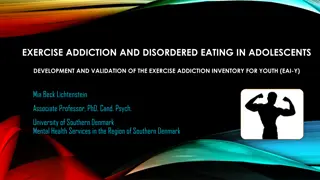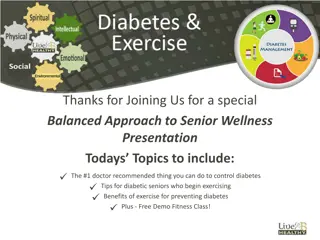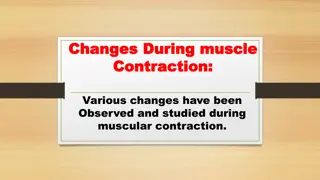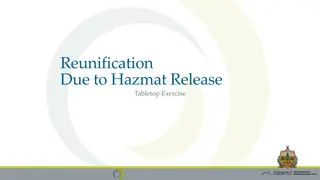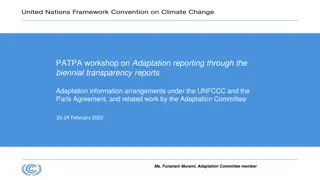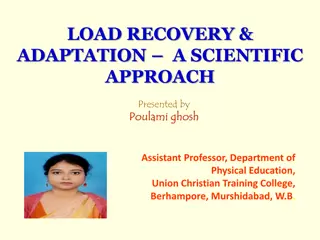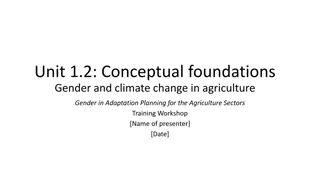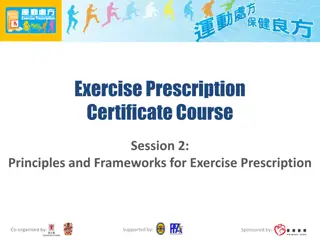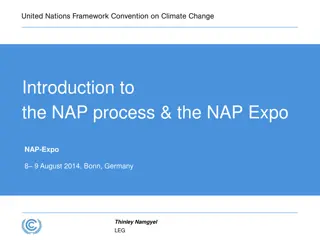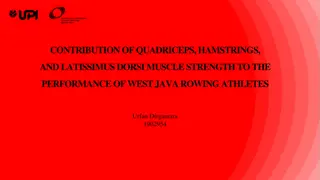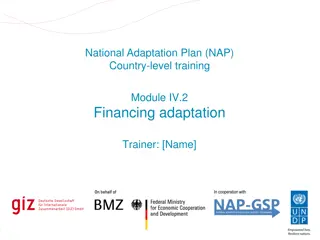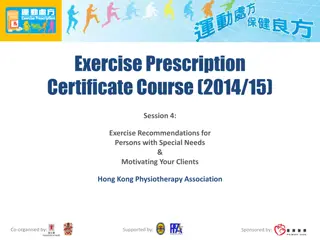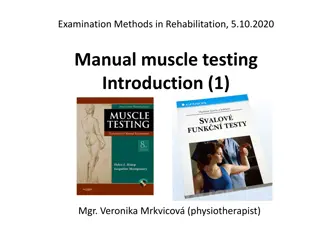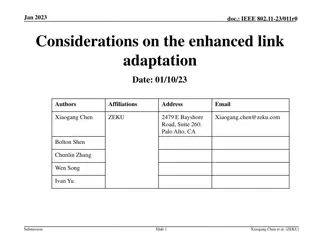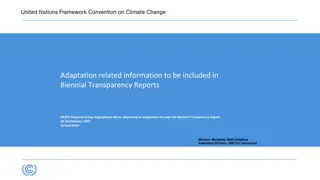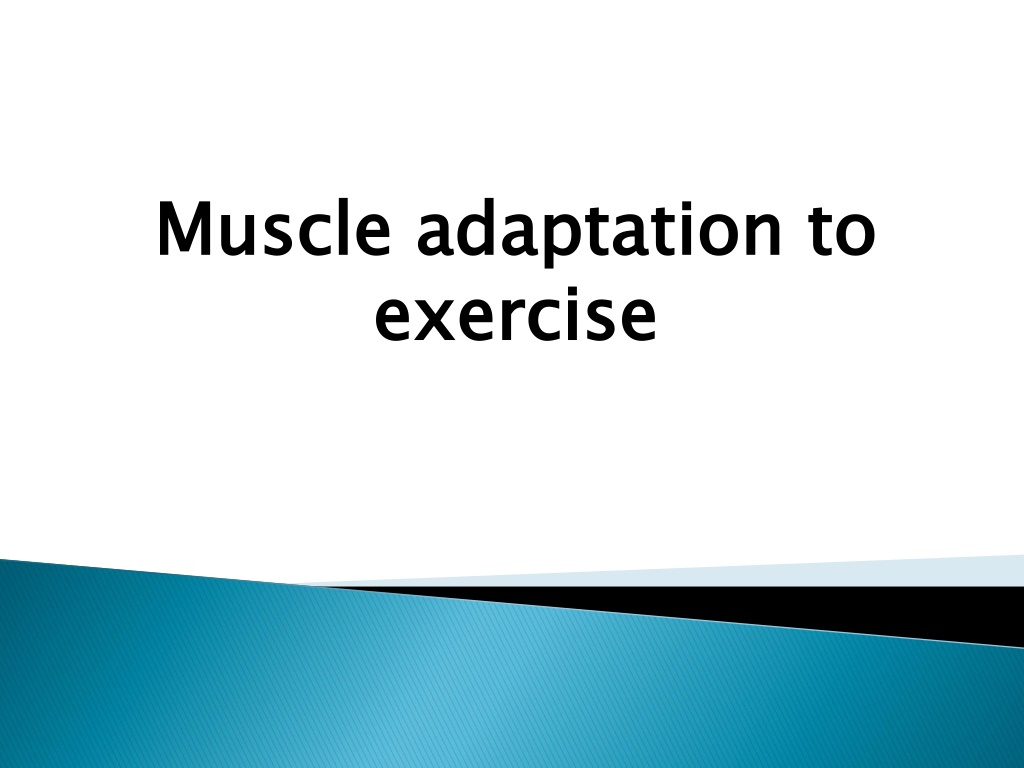
Muscle Adaptation and Performance in Exercise Training
Exploring muscle adaptation and performance in exercise training, including topics like strength, power, endurance, muscle hypertrophy, respiration, and cardiovascular effects. Learn about muscle strength, power, and endurance, along with the role of glycogen in muscle endurance. Discover how athletic training impacts muscle performance and the cardiovascular system during exercise.
Uploaded on | 0 Views
Download Presentation

Please find below an Image/Link to download the presentation.
The content on the website is provided AS IS for your information and personal use only. It may not be sold, licensed, or shared on other websites without obtaining consent from the author. Download presentation by click this link. If you encounter any issues during the download, it is possible that the publisher has removed the file from their server.
E N D
Presentation Transcript
Muscle adaptation to exercise Muscle adaptation to exercise
Strength, power, and endurance of muscles Effect of athletic training on muscles and muscle performance Muscle hypertrophy Fast Respiration in exercise Oxygen consumption and pulmonary ventilation in exercise Effect of training on vo Cardiovascular system in exercise Work output, oxygen consumption, and cardiac output during exercise Effect of training on heart hypertrophy and on cardiac output Role of stroke volume and heart rate in increasing the cardiac output Body heat in exercise & heatstroke Strength, power, and endurance of muscles Effect of athletic training on muscles and muscle performance Muscle hypertrophy Fast- -twitch and slow Respiration in exercise Oxygen consumption and pulmonary ventilation in exercise Effect of training on vo2 2max Cardiovascular system in exercise Work output, oxygen consumption, and cardiac output during exercise Effect of training on heart hypertrophy and on cardiac output Role of stroke volume and heart rate in increasing the cardiac output Body heat in exercise & heatstroke twitch and slow- -twitch muscle fibers twitch muscle fibers max
Strength, Power, And Endurance Of Muscles Strength, Power, And Endurance Of Muscles Muscles Strength: force a muscle can produce Size of muscles influence by a maximal contractile force, Normally 3 -4 kg/cm2 E.g a cross-sectional area 150 cm2 cause maximal contractile strength of 525 kilograms Mechanical work of muscle = force applied by the muscle X distance Muscles Strength: Refers to the amount of
Strength, Power, And Endurance Of Muscles Strength, Power, And Endurance Of Muscles Power : : amount of work that the Muscles muscle performs in period of time ( kg- m/min) The maximal power achievable by all the muscles in the body of a highly trained athlete with all the muscles working together is approximately the following: Muscles Power Guyton & Hall12E
Strength, Power, And Endurance Of Muscles Strength, Power, And Endurance Of Muscles Muscles Endurance: Endurance: Ability of muscles to Muscles sustain repeated contractions against a resistance for period of time. depends on glycogen depends on glycogen stored in the muscle
Effect of Training on Muscles and Muscle Performance Effect of Training on Muscles and Muscle Performance Maximal Resistance Training: 6 maximal muscle contractions X sets 3 days X one week increase in muscle strength muscle mass ( (muscle hypertrophy) muscle strength, and muscle hypertrophy) Muscles function under no load under no load little in strength
Muscle Hypertrophy: Muscle Hypertrophy: With training muscles hypertrophied 30- 60 % Due to diameter of the muscle fibers ?? number of fibers ???? Changes in hypertrophied muscle: myofibrils 120 % in mitochondrial enzymes( tricarboxylic acid) ATP and phosphocreatine 50 % in stored glycogen 75 -100 % in stored triglyceride oxidation rate 45 % Changes in hypertrophied muscle: 50 % in stored glycogen
Fast Fast- -Twitch and Slow Twitch and Slow- -Twitch Muscle Fibers Twitch Muscle Fibers fast E.G gastrocnemius muscle fast- -twitch fibers: twitch fibers: forceful and rapid contraction slow E.G leg muscle slow- -twitch muscle: twitch muscle: for prolonged muscle activity fast slow strength of contraction minutes to hours. fast- -twitch fibers slow- -twitch fibers twitch fibers deliver power seconds to a minute twitch fibers provide endurance, prolonged
Respiration In Exercise Oxygen Consumption VO VO Oxygen Consumption VO2 2 and Pulmonary Ventilation VE in Exercise VO2 and Pulmonary Ventilation VE in Exercise 2 at rest is about 250 ml/min , However !!! at Maximal efforts VO 20-fold between the resting state and maximal intensity VO2 2 and V VE E increase about F F Effect of exercise on oxygen consumption and Ventilation and Its Physiological Regulation. Springfield, Ill: Charles C Thomas, 1950.) Effect of exercise on oxygen consumption and ventilatory Ventilation and Its Physiological Regulation. Springfield, Ill: Charles C Thomas, 1950.) ventilatory rate. (Redrawn from Gray JS: Pulmonary rate. (Redrawn from Gray JS: Pulmonary
Effect of Training on Vo Effect of Training on Vo2 2Max Max In below study Vo2Max increased only about 10 percent by training, Moreover other factors !!! Chest sizes in relation to body size Increase respiratory muscles For more information check Guyton & Hall12E Increase Increase in Vo2 Max over a period of 7 to 13 weeks of athletic training. (Redrawn from Fox EL: Sports Physiology. Philadelphia: Saunders College Publishing, 1979.) in Vo2 Max over a period of 7 to 13 weeks of athletic training. (Redrawn from Fox EL: Sports Physiology. Philadelphia: Saunders College Publishing, 1979.)
Oxygen Oxygen- -Diffusing Capacity of Athletes. Diffusing Capacity of Athletes. The oxygen diffusing capacity is a measure of the rate at which oxygen can diffuse from the pulmonary alveoli into the blood.
Cardiovascular System in Exercise Cardiovascular System in Exercise Work Output, Oxygen Consumption, and Cardiac Output During Exercise All these are directly related to one another, muscle work output increases oxygen consumption, and increased oxygen consumption in turn dilates the muscle blood vessels, thus increasing venous return and cardiac output C.O . Effect of Training on Heart Hypertrophy and on Cardiac Output: Training increase C.O about 40 % greater than untrained persons SO, heart chambers of marathoners enlarge about 40 percent in contrast to non trained Heart size of marathoner larger than normal person Work Output, Oxygen Consumption, and Cardiac Output During Exercise Effect of Training on Heart Hypertrophy and on Cardiac Output: SO,
Cardiovascular System in Exercise cont Cardiovascular System in Exercise cont Role of Stroke Volume and Heart Rate in Increasing the Cardiac Output
Cardiovascular System in Exercise cont Cardiovascular System in Exercise cont The resting level of about 5.5 L/min to 30 L/min. The cardiac output resting level of about 5.5 L/min to 30 L/min. cardiac output increases from its increases from its The to 162 milliliters, an increase of about 50 percent The stroke volume to 162 milliliters, an increase of about 50 percent stroke volume increases from 105 increases from 105 Whereas the 50 to 185 beats/min, an increase of 270 percent. Whereas the heart rate 50 to 185 beats/min, an increase of 270 percent. heart rate increases from increases from The heart rate increase a greater proportion of the increase in cardiac output than does the increase in stroke volume The heart rate increase a greater proportion of the increase in cardiac output than does the increase in stroke volume why ????? why ????? Approximate stroke volume output and rate marathon Approximate stroke volume output and heart rate at different levels marathon athlete. heart at different levels of athlete. of cardiac output in a cardiac output in a
Body Heat In Exercise Almost all the energy released by the body's metabolism of nutrient is converted into body heat. Working muscle use only 20 - 25 %. Remainder of nutrient is converted into heat. Almost all the energy that goes into creating muscle work still becomes body heat because small portion of this energy is used for: (1) Overcoming resistance to the movement of the muscles and joints. (2) Overcoming friction of the blood flowing through the blood vessels, and All of which convert the muscle contractile energy into heat... What will happen during hot and humid condition if sweating mechanism cannot eliminate the heat ????
Heatstroke Heatstroke During endurance training body temperature rises 98.6 to 102 or 103 F (37 to 40 C) hot and humid conditions body temperature rise to 106 to 108 F (41 to 42 C) Consequently, temperature destructive tissue cells mainly (brain cells) Body weakness, exhaustion, headache, dizziness, nausea (disgust), sweating, confusion, uncontrolled gait, collapse, and unconsciousness. And may lead to death (brain cells) and symptoms !!! :
Treatment of heatstroke The most practical way : Remove all clothing Maintain a spray of cool water on all surfaces of the body or continually sponge the body. Blow air over the body with a fan. Physicians prefer total immersion of the body in water containing a mush of crushed ice if available.

